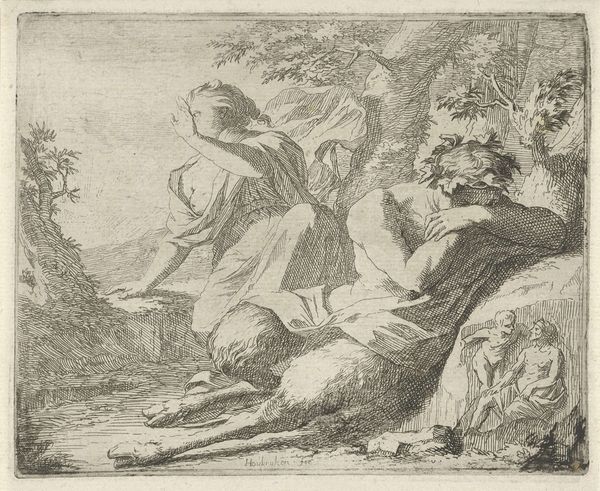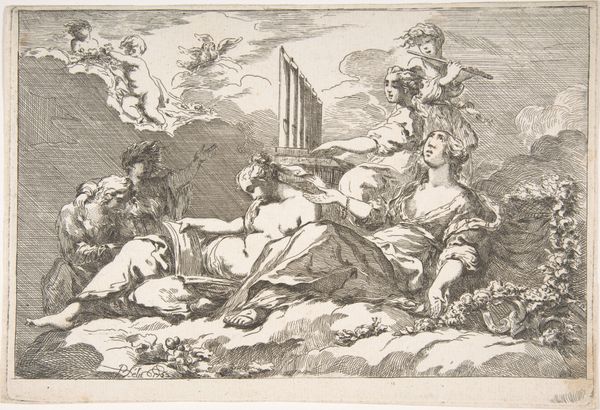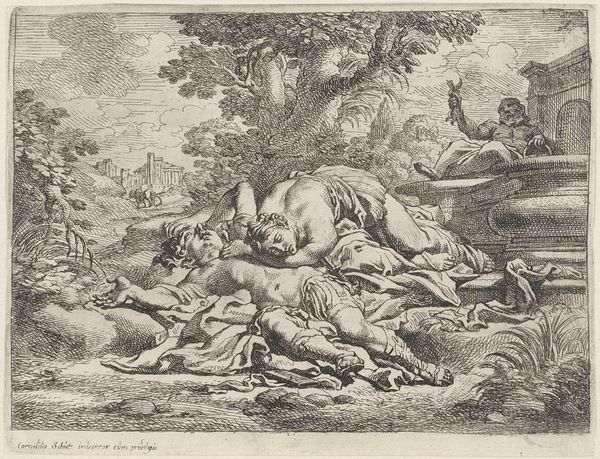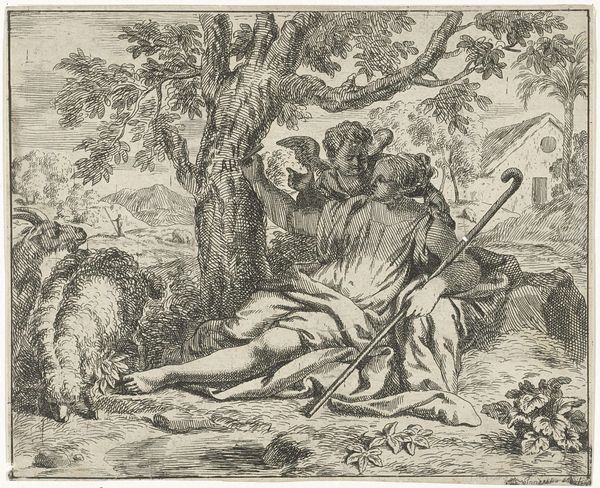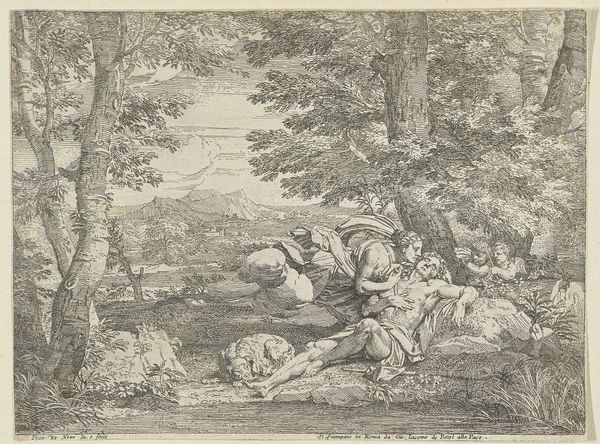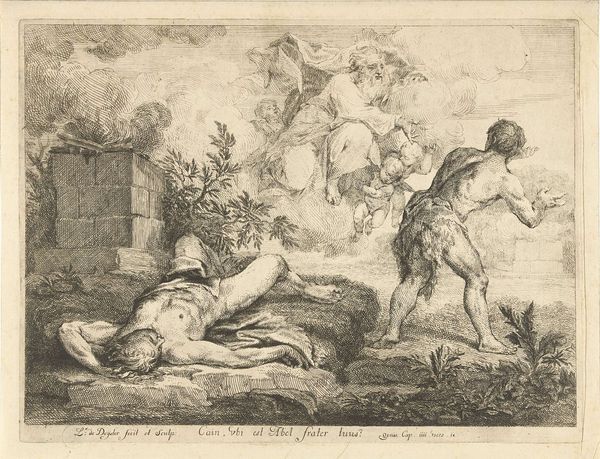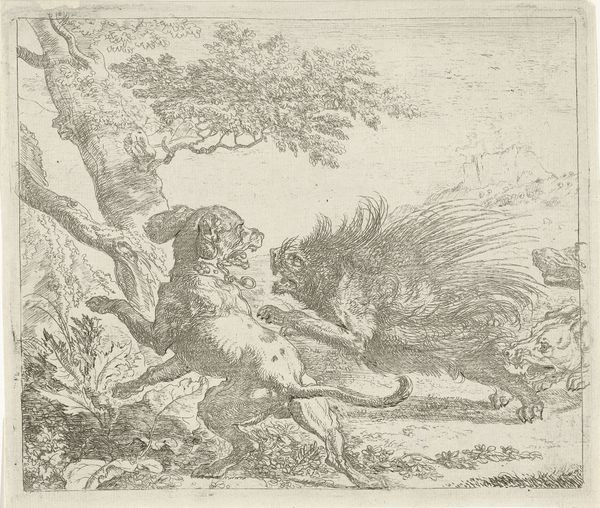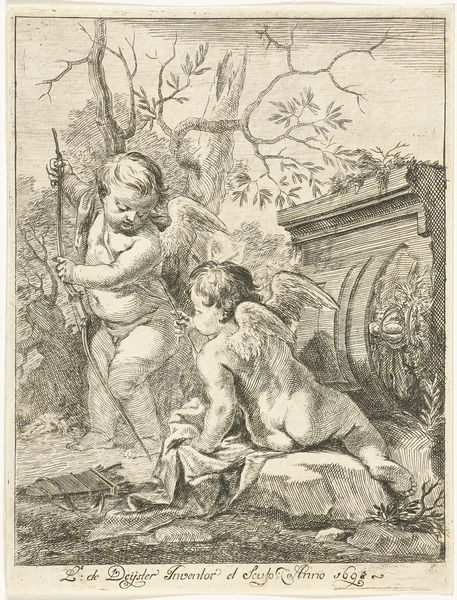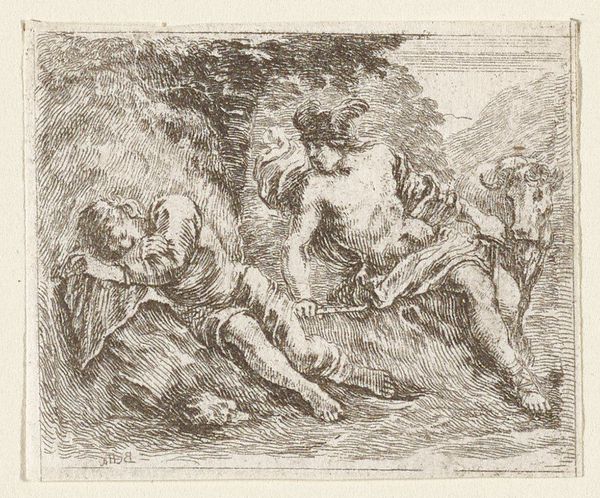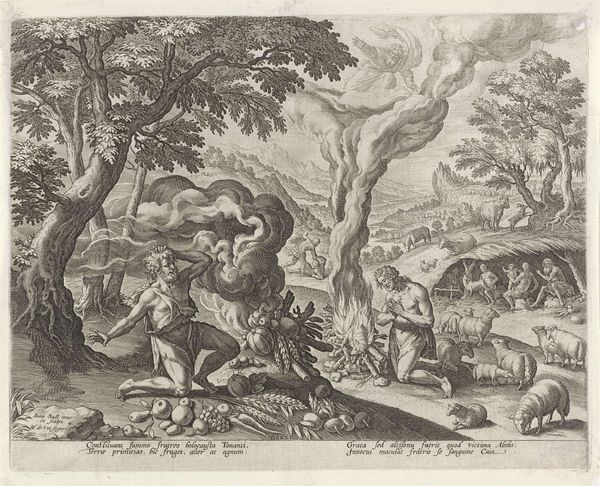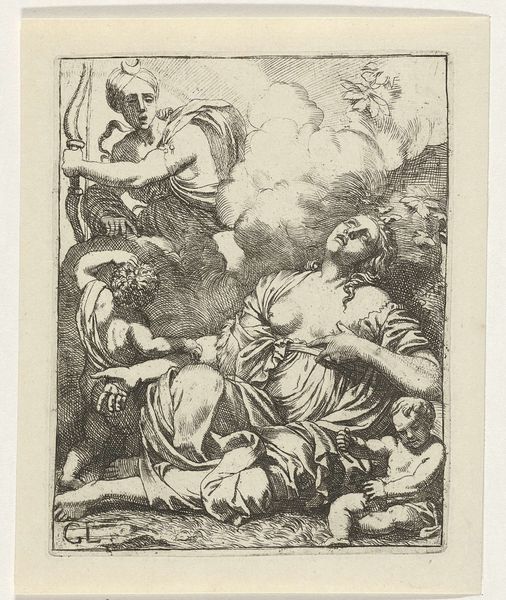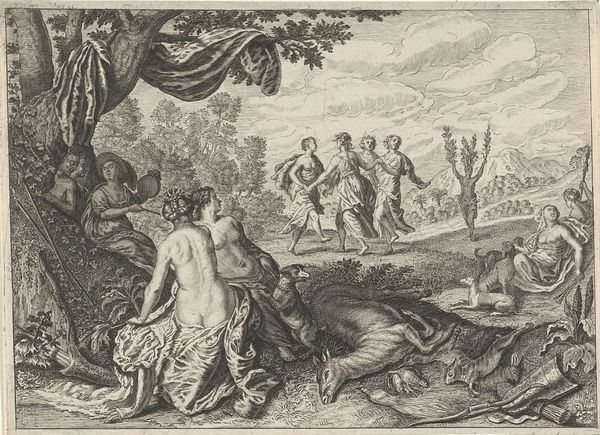
etching
#
allegory
#
baroque
#
pen drawing
#
etching
#
landscape
#
figuration
Dimensions: height 200 mm, width 286 mm
Copyright: Rijks Museum: Open Domain
Curator: This is Cornelis Schut’s etching, "Cimone en Ifigenia," dating back to between 1618 and 1655. What catches your eye? Editor: Immediately, it's the tonal range he achieves with etching alone. Look at how the density of line creates areas of deep shadow, balanced against the delicate, airy spaces. Curator: Absolutely. Consider the historical roots in mythological paintings as he translates narrative elements through his expert linear style. This is part of a broader fascination with classical allegory, a popular Baroque theme. The etching is currently housed here at the Rijksmuseum. Editor: The allegory is intriguing. Could you elaborate? Curator: Of course. The story depicts Cimone, a simpleton, encountering the sleeping Ifigenia. Cupid looms above. He's instantly smitten by her beauty. I see the narrative less as a literal account and more as an exploration of love and the awakening of higher consciousness. Editor: It's a study in contrasts, isn’t it? The rough-hewn shepherd versus the refined beauty of Ifigenia. It visually emphasizes the transformation he undergoes upon seeing her. Curator: Precisely! Cimone's subsequent education and refinement underscore the power of love as a civilizing force, the influence of Eros itself! There's an evolution being represented by the narrative, enhanced by all the various aesthetic and material features. Editor: Do you think his linear control reflects more the subject's own constraints as a simple shepherd? Is Schut telling us that a true artist is able to transform, elevate and move? Curator: Possibly! Perhaps, both the shepherd’s initial constraint as well as love's expansive impact on life. Look at how he weaves these emotional undercurrents using symbolic language drawn from the era’s cultural milieu. He also invites viewers into that experience. Editor: This reminds us to always reflect on what seems to remain, and what slowly fades in memory over long periods of history. Thank you. Curator: It’s fascinating how this etching encapsulates cultural memory and emotional resonance through enduring symbols. I learned much too.
Comments
No comments
Be the first to comment and join the conversation on the ultimate creative platform.

